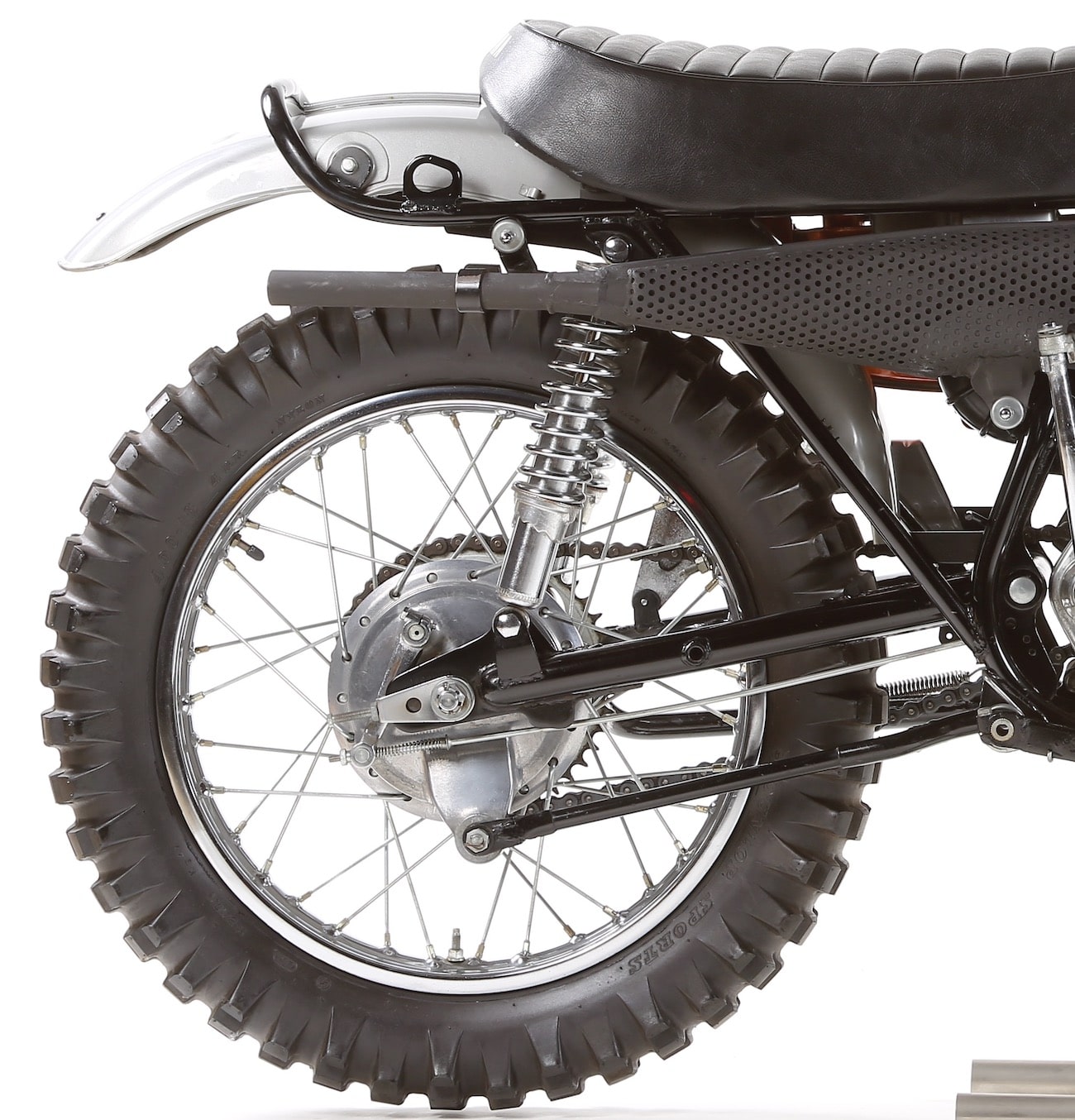CLASSIC MOTOCROSS IRON: 1971 YAMAHA RT1-MX 360
Inspired by the success of the DT1 and AT1 a year earlier, Yamaha pulled out all of the stops to release the black 360cc RT1 to the public in early 1970. The RT1 was part of Yamaha’s line of single-cylinder two-stroke machines. There was the 100cc LT1, 125cc AT1, 175c CT1, 250cc DT1 and 360cc (more on that later) RT-1. From the day that the ground-breaking DT-1 was released in 1968, rumors floated around that there was an Open classer in the works—and the rumors turned out to be true. The big RT1 360 came on the scene in 1970. As you would expect each year all the Yamaha off-road bikes were followed by new versions of the LT2/3 100, AT2/3 125, CT2/3 175, DT2/3 250 and RT2/3 360 models, but by 1974 Yamaha had relabeled all of its off-road bikes as DT or MX models with displacement designations (e.g., DT360 or MX360).
Our 1971 example is finished in gorgeous black with red pinstripes. The 1970 RT1 was nearly identical but featured yellow pin striping. Similar to the other Yamaha dirt bikes of the period, there was a street-equipped Enduro model and a GYT-kitted all-out motocrosser. The 1971 Yamaha RT1 360 shared the same frame and running gear as the DT1 Enduro; the only concessions for motocross were stripping off the lights, the 21-inch front wheel and a high front fender. The most attractive thing about the RT1-MX was the $995 price—and the included front number plate sealed the deal for first-time Open-bike riders.
The piston-port engine also had engine cases, a transmission, clutch and ignition that were similar to its 250cc sibling’s. Bore was increased from 70mm to 80mm, and the stroke was increased from 64mm to 70mm. Displacement was not 360cc but rather 351cc (as the Japanese manufacturers were very fond of rounding up displacement numbers). The installed GYT kit (Genuine Yamaha Tuning) featured a center-located spark plug head with a 7.2:1 compression ratio (compared to the stock 6.8:1), a ported cylinder, 34mm Mikuni, iron-lined aluminum cylinder (instead of the DT1’s chromed-plated cylinder liner) and an expansion chamber exhaust. It also came with taller first, second and third gears than the DT1. Strangely, it kept the Autolube oil system. The result was an impressive 36 horsepower—6 more than the RT1 Enduro model.
Besides the price, the best thing about the RT1-MX was the bike’s reliability. Because Yamaha was entering into virgin off-road territory with the DT1 and RT1, its engineers over-designed parts to ensure that there were no weak links. If it had a negative, it was that it kicked back when you tried to start it and pinged if ridden hard. Yamaha fixed these problems on the 1971 RT1-B. Never a serious Open-class motocross bike, the RT1-MX was a popular entry-level racer, desert bike and enduro machine.
The RT1-MX is not popular with collectors. Most RT1MX bikes were well-used and were fitted with non-stock parts, as in Preston Petty fenders or Vesco gas tanks. The oil-injection system was usually removed also. Collectors want all of the original stuff, especially the stock GYT expansion chamber. Aftermarket Bassani or Hooker pipes are not as valuable as the stock pipe. There is a huge bonus for the original Yokohama tires.








Comments are closed.